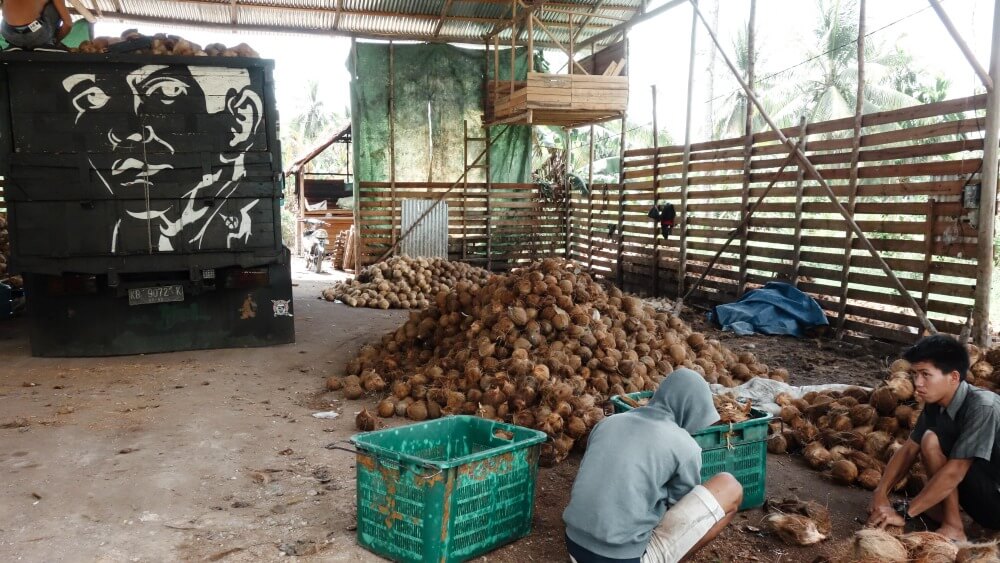
By diversifying coconut-based products, smallholder farmers can potentially increase their monthly income by three and a half times.
Almost all parts of a coconut tree- from the leaves to the roots- hold economic value. Coconut milk, coconut oil and palm sugar are popular consumer goods in Indonesia that originate from coconut trees. As part of our Unmet Needs initiative, Kopernik interviewed coconut smallholder farmers in West Kalimantan and Papua.

We learned that despite the diverse range of products that derive from the versatile tree, Indonesian coconut farmers continue to generate relatively low incomes. Currently farmers tend to sell raw coconuts at below market prices, and earn approximately only USD 70 – USD 109 a month per hectare.
Based on market research and qualitative field interviews conducted with ten coconut farmers, Kopernik examined the revenues, production costs and profits of three types of coconut-derived goods: raw coconut, copra and grated coconut (typically used for coconut milk production). Our calculations demonstrate that farmers can increase their income by almost three times if they produce a value-added product such as grated coconut from the raw coconut they harvest instead of selling their raw coconuts to a middleman.
On top of this value-added product, farmers can potentially also produce palm sugar from the flowers, brooms and mats from the leaves, and husk from the coconut shell as complementary products to supplement their income. We have looked more closely at the profitability of palm sugar and found that by adding it to the current product offer smallholder farmers can increase their net income by 57%. By combining palm sugar with a value-added product such as grated coconut, they can earn up to USD 385 per hectare each month resulting in a 255% increase from their current net income.

Diversifying coconut-based products seems to be a simple solution with large impact for smallholder farmers. So why are farmers not engaging in these value added activities? In a subsequent stage of our research Kopernik plans to further explore what is preventing farmers from realizing these opportunities and test a few interventions to enable them to overcome these challenges.
2 On average, 1 hectare of coconut farm consists of on average 100 trees.
3 Copra showed to be not economically viable at the location of the research as its profitability was lower than that of a raw coconut.
4 Calculation is for a value-added product sold directly at the market bypassing the middleman.
5 Profits calculated are based on selling directly at the market.
6 Calculation is based on 100 coconut trees/hectare.


